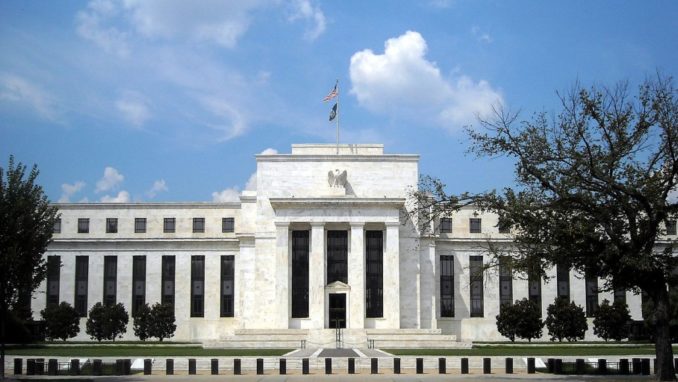
AgnosticPreachersKid, CC BY-SA 3.0, via Wikimedia Commons
What almost everyone calls “inflation” is really a rise in the general price level. OK. But the real definition of “inflation” is inflation of the money supply. A rise in the general price level is a consequence of inflation of the money supply.
Technically, the price level is determined by supply and demand, one of economic science’s most well known concepts. We may think of demand as overall spending in the economy and supply as the total of all goods and services in the economy, creating the classical supply/demand curve. Here are the four possibilities:
- When demand for goods rises, prices will rise (all other things being equal).
- When demand for goods fall, prices will fall (all other things being equal).
- When supply of goods falls, prices will rise (all other things being equal).
- When supply of goods rises, prices will fall (all other things being equal).
Although a rise in the general price level can happen due to a drop in the supply of goods, this condition usually is not what concerns most people. This situation happens during natural disasters, wars, or foolish economic regulation that hampers an industry. For example, people will hoard plywood, bottled water, and flashlight batteries when a hurricane is headed for Florida. The drop in supply will cause prices to rise. Or, an increase in tariffs on foreign steel, which reduces supply, will cause the cost of steel to rise. The supply disruptions usually are temporary.
The scourge of a creeping higher price level is caused by an increase in the money supply, and there are only two ways in which the money supply can increase.
One, the Federal Reserve creates more “base money” when it buys an asset, usually a government bond, by creating a new deposit out of thin air for the Treasury Department. In economic science this is called “monetizing the debt” and is exactly what the government has been doing for the half century since the US led the world off of the gold standard in 1971.
Two, banks can increase M1, cash and checking account balances held by the public, via their privilege of engaging in fractional reserve lending. Simply stated, banks do not have to maintain “base money”, cash or a checking account balance at the Fed (a reserve account) that can be converted to cash, for each dollar of deposit. They need keep only a fraction of “base money” for this purpose, thus the name “fractional reserve banking”. Therefore, a bank with excess reserves can create a new checking deposit when it lends to its borrowers.
That’s it. Simple, isn’t it? The following table will explain why the general price level has increased.
Those are NOT typos. The monetary base has increased by a multiple of forty-six from January 1980 to January 2022. M1 has increased by a multiple of fifty-three in the same time period. This is what is causing inflation. Not greed, not supply chain disruptions, or other red herrings. It’s money created out of thin air by the Fed.
© Patrick Barron 2022 Website



